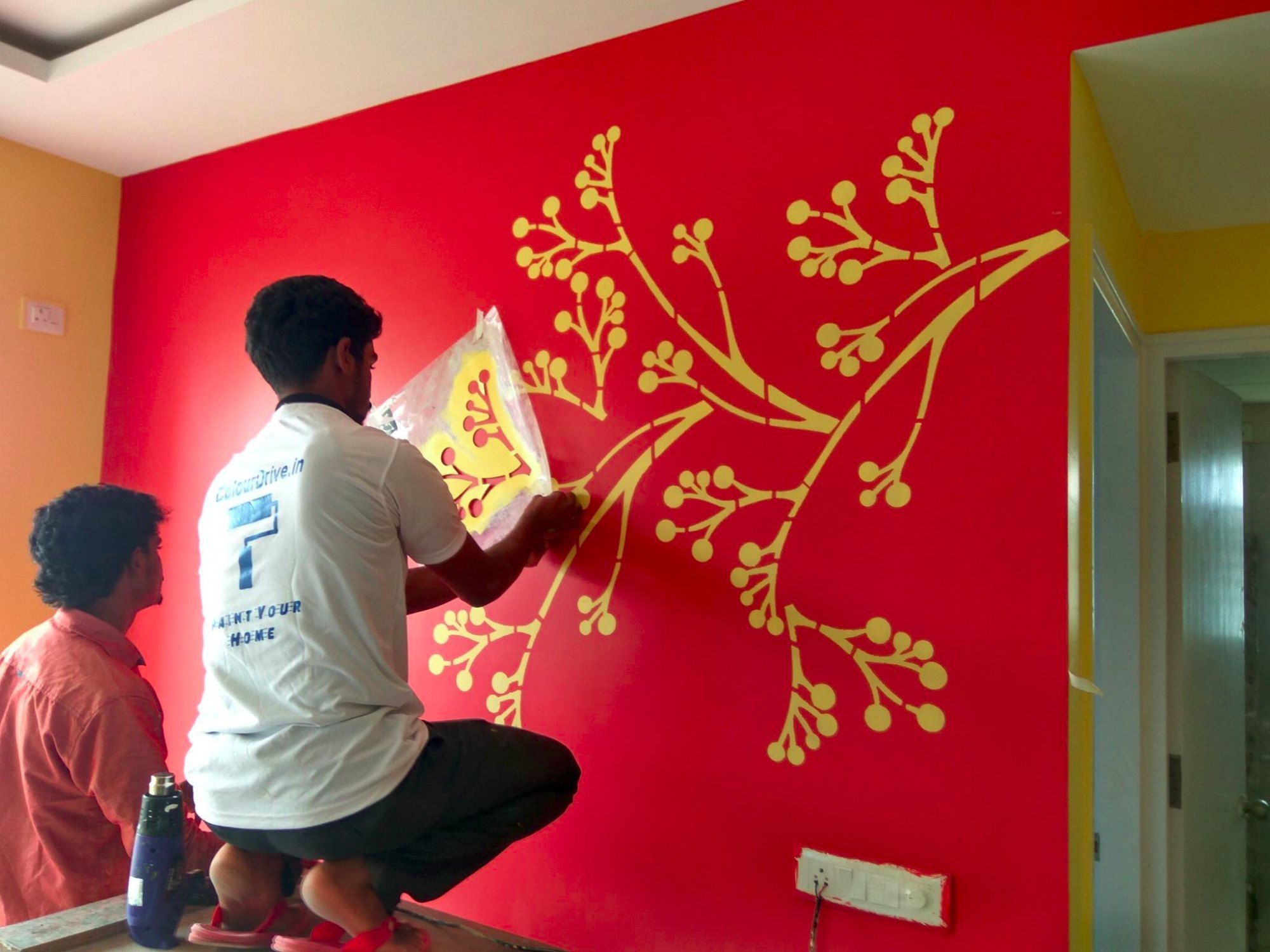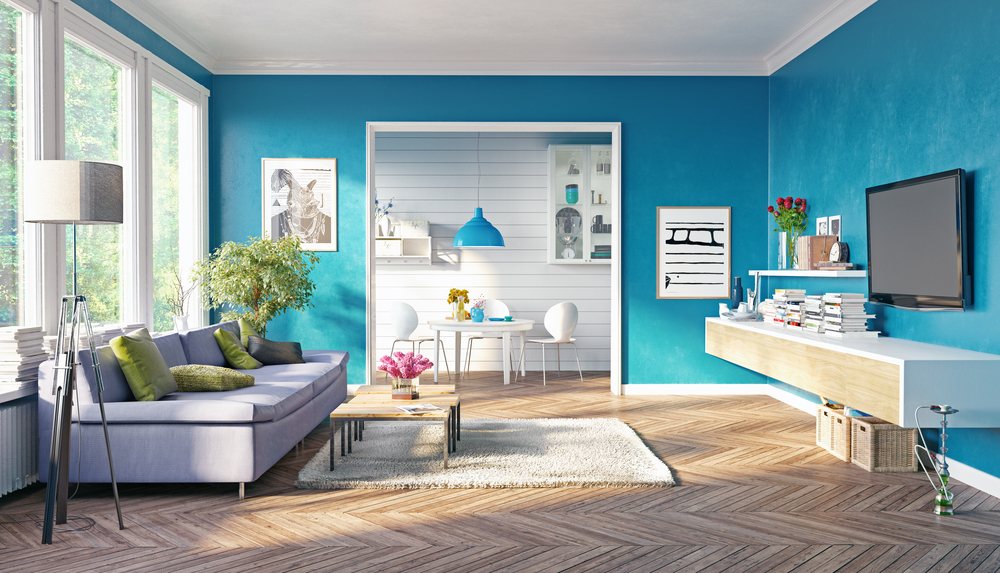Trusted Cleveland Metro Painting Specialists for Reliable Home and Office Painting
Trusted Cleveland Metro Painting Specialists for Reliable Home and Office Painting
Blog Article
Enhance Your Inside Layout With Comprehensive Color Assessment
The combination of color assessment into indoor layout provides a special chance to refine and elevate the emotional and visual resonance of a space. By involving with a skilled color specialist, you can navigate the intricacies of color selection, making certain that your selections not only complement building functions but additionally reverberate with personal design and mental impact.
Advantages of Color Consultation

Additionally, shade consultation aids in making best use of natural light and optimizing spatial understanding. Lighter colors can make an area show up more expansive, while darker shades produce an intimate setup. Cleveland Metro Painting Specialists. This critical application of shade can significantly influence the overall atmosphere of any type of indoor area
In addition, specialist experts have a comprehensive understanding of timeless classics and current trends, ensuring that the chosen colors will certainly continue to be enticing with time. This insight can conserve customers from expensive redesigns in the future. Shade appointment encourages clients by offering them with a clear vision and direction, cultivating self-confidence in their style choices and ultimately leading to a much more satisfying and effective indoor layout result.
Understanding Shade Psychology
The relevance of color psychology in indoor style can not be overstated, as it dives into the emotional and emotional impacts that various tones can stimulate in individuals. Shades can influence state of mind, habits, and also efficiency, making them a crucial factor to consider in any type of design job.
For instance, cozy colors such as red, orange, and yellow are usually connected with energy and warmth. They can boost feelings of exhilaration and comfort, making them ideal for social spaces like living cooking areas or rooms. Alternatively, awesome shades like blue, green, and purple often tend to evoke calmness and peace, making them perfect for rooms or meditation areas.
In addition, making use of neutral tones can produce a well balanced environment by enabling the bolder shades to stand out without overwhelming the detects. Recognizing these psychological effects makes it possible for designers to create areas that not just look cosmetically pleasing but likewise advertise psychological health.
Incorporating color psychology into indoor layout entails a thoughtful selection of shades tailored to the designated function of each area, eventually enhancing the total experience for its residents. This awareness is important for accomplishing a unified and functional indoor environment.
The Color Wheel Discussed
Comprehending the connections in between colors is essential for effective interior style, and the shade wheel offers as a useful tool in this procedure. The shade wheel, created by Isaac Newton in the 17th century, highlights the range of shades set up in a round style. It makes up primaries-- red, blue, and yellow-- that can not be created by mixing various other shades. Second shades, developed by integrating primary colors, consist of environment-friendly, orange, and purple. Tertiary shades result from mixing a primary and a second shade, causing colors such as turquoise and red-orange.
The color wheel helps designers grasp the partnerships in between colors, consisting of corresponding, analogous, and triadic systems. Complementary colors, located opposite each various other on the wheel, produce vibrant contrasts that can invigorate an area. Analogous shades, located beside one another, give a natural and harmonious appearance. Triadic plans use 3 evenly spaced shades, providing equilibrium and visual passion.
Using the shade wheel in interior layout not only improves visual appeal however also evokes details emotions and environments, making it a crucial recommendation for shade visit their website assessment. Recognizing these connections eventually encourages developers to create areas that are both aesthetically exciting and functional.
Selecting the Right Combination
An appropriate shade system can combine an area, improve its attributes, and stimulate preferred feelings. Different areas serve different functions and require palettes that reflect their desired usage; for circumstances, my response serene shades such as soft blues or eco-friendlies work well in bedrooms, promoting leisure.
Light can significantly alter how colors appear, so it is necessary to examine the space at different times of the day. A harmonious palette ought to enhance these features, developing a cohesive appearance throughout the room.
When selecting colors, make use of the 60-30-10 rule, which recommends that 60% of the space need to be a dominant shade, 30% an additional color, and 10% an accent color. This proportion makes sure balance and aesthetic interest (Cleveland Metro Painting Specialists). Ultimately, sample shades on the walls prior to committing, as this enables you to see how the colors interact with one an additional and the overall atmosphere they create in your interior layout project.
Dealing With a Shade Consultant

When dealing with a color expert, the procedure commonly starts with a first appointment. Throughout this conference, you'll review your vision, choices, and the existing components in your area. The consultant will evaluate your demands and might suggest specific view it now color palettes that line up with your objectives.
After developing an instructions, the consultant will certainly provide samples and visual aids to aid you picture the recommended shade plans. This step is vital, as colors can appear in a different way under varying lighting problems.
In addition, a color specialist can guide you in picking corresponding furnishings, artwork, and devices to balance with your chosen scheme. By working together carefully, you can achieve a polished aesthetic that elevates your insides and creates a welcoming environment. Ultimately, the proficiency of a shade expert can considerably boost the general impact of your layout project.
Verdict
In recap, comprehensive shade assessment acts as an important device for improving indoor style. By leveraging expert understanding of shade psychology and spatial dynamics, a customized color scheme can be developed to stimulate specific feelings and develop a harmonious setting. This tactical strategy not only promotes a natural style story but likewise minimizes the risk of pricey redesigns. Ultimately, involving with a shade specialist makes certain an informed and visually pleasing end result, elevating the general experience of the room.
By involving with a skilled shade consultant, you can navigate the complexities of color choice, making certain that your options not only enhance building functions yet likewise reverberate with individual design and mental influence. It comprises key shades-- red, blue, and yellow-- that can not be produced by mixing other colors.The color wheel assists designers comprehend the partnerships in between shades, including complementary, comparable, and triadic plans.When selecting colors, use the 60-30-10 rule, which suggests that 60% of the room need to be a leading shade, 30% a second shade, and 10% an accent color. By leveraging professional knowledge of color psychology and spatial characteristics, a customized shade combination can be established to evoke specific feelings and develop an unified atmosphere.
Report this page